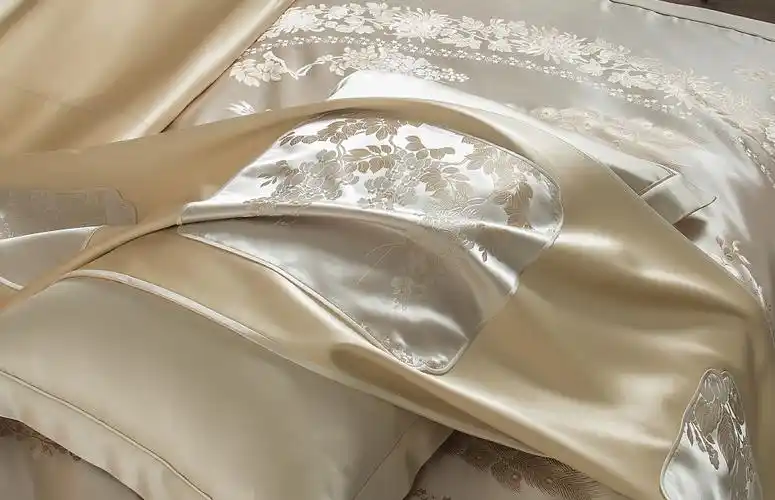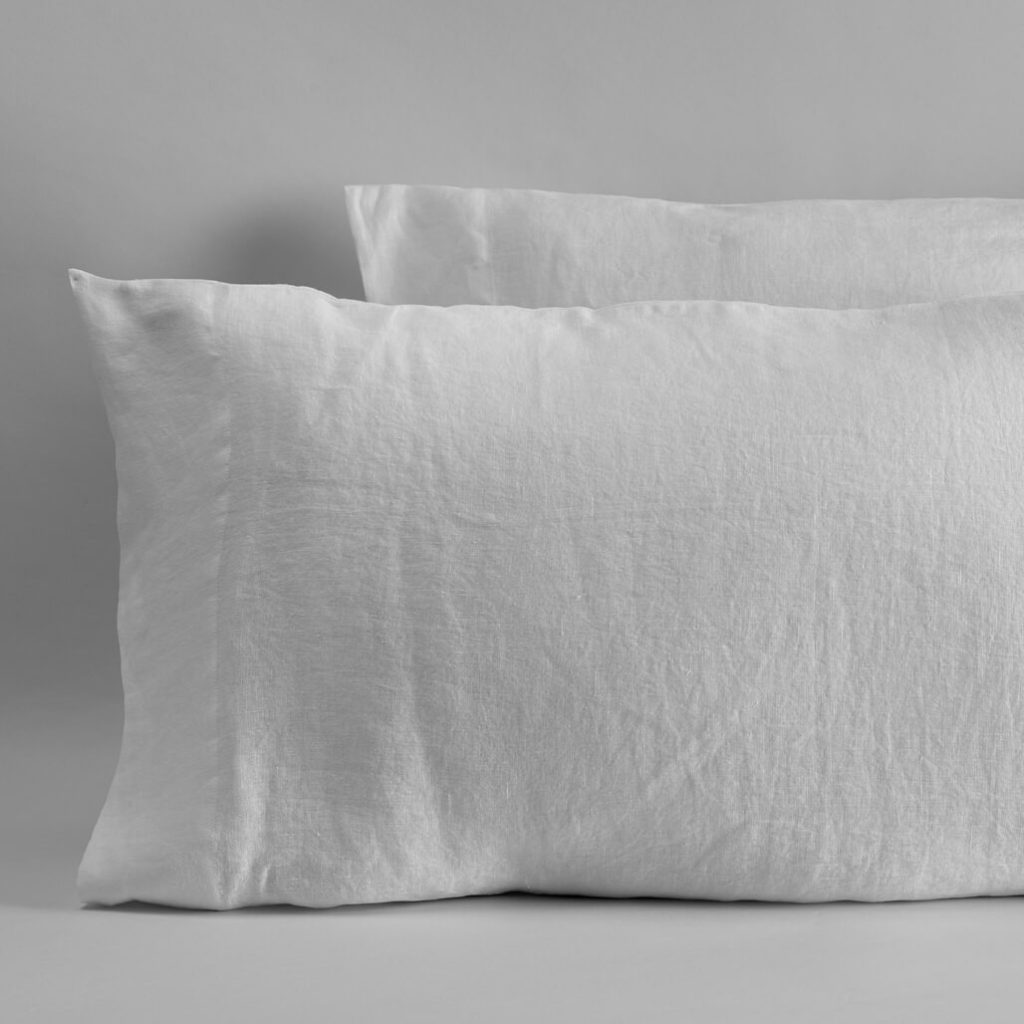What fabrics are used in luxury bedding sets is a core question that determines the quality of sleep and the aesthetic grade of a bedroom. The high-end bedding market is primarily dominated by a select few strictly screened natural fibers. The most highly regarded among these include Long-Staple Cotton (such as Egyptian and Pima cotton), Bamboo Viscose which boasts a silk-like luster and eco-friendly properties, Tencel Lyocell which combines technology with comfort, and traditional Mulberry Silk and Linen. True luxury depends not merely on the name of the raw material, but on the fiber length (staple length), the density of the weave (thread count), and the finishing technologies employed. For consumers seeking the ultimate sleep experience or brand owners looking for high-end customization, understanding the physical properties of these fabrics—such as breathability, moisture-wicking capabilities, and skin-friendly texture—is the foundation for making informed purchasing decisions. Top-tier manufacturers utilize precision textile engineering to transform these raw materials into intimate works of art that are both durable and incredibly soft.
The Hierarchy of Cotton: Long-Staple Supremacy

When discussing what fabrics are used in luxury bedding sets, cotton consistently holds a dominant position, yet not all cotton is created equal. Ordinary short-staple cotton is often used for low-end products; it is prone to pilling and has a rough hand-feel. True luxury bedding relies almost exclusively on Long-Staple Cotton and Extra-Long Staple (ELS) cotton. The fibers of these cotton varieties typically exceed 30mm in length, enabling the spinning of finer, stronger, and smoother yarns. Egyptian Cotton has long been regarded as the gold standard in this field, stemming from the unique climate of the Nile Delta which produces ultra-long fibers that endow the fabric with superior softness and luster.
Pima Cotton, particularly American-grown cotton bearing the Supima trademark, is another top-tier choice. It shares similar physical characteristics with Egyptian cotton, offering excellent durability and resistance to pilling. For high-end hotel linens and luxury home goods, fabrics woven from single-ply long-staple cotton yarns do not stiffen after multiple washes; instead, they become softer over time. As a premier supplier answering the question of what fabrics are used in luxury bedding sets, Vanyo Home Textiles rigorously screens cotton yarn grades during production to ensure every inch of fabric possesses high tensile strength and a silky touch.
Bamboo Viscose: The Sustainable “Vegetable Silk”

In recent years, Bamboo Viscose has rapidly emerged as a formidable contender in modern luxury bedding. Derived from naturally growing bamboo, this fabric undergoes specific pulping and spinning processes to form a regenerated cellulose fiber with astonishing softness. Its touch is often described as “softer than cotton, smoother than silk,” and with a price point generally lower than Mulberry silk, it offers exceptional value. Bamboo fiber possesses a unique cross-sectional structure filled with micro-gaps and holes, which grants it superior moisture-wicking and temperature-regulating capabilities, making it the ideal choice for “hot sleepers.”
From an environmental perspective, bamboo grows quickly and requires no extensive pesticides, aligning with global sustainability trends. In terms of manufacturing craftsmanship, high-quality bamboo bedding often employs a Sateen weave, further enhancing its drape and pearl-like sheen. For brands seeking a differentiated competitive edge, developing bamboo series is a key pathway into the eco-luxury market. We are seeing an increasing number of OEM orders specifying 100% organic bamboo to meet consumer demands for both health and environmental protection.
Tencel Lyocell: The Pinnacle of Modern Fiber Technology
Tencel™ is the brand name for Lyocell fiber, representing the highest level of fiber technology. It is typically made from eucalyptus wood pulp using a closed-loop production process where the solvent recovery rate exceeds 99%, making it one of the most eco-friendly textile raw materials available. Similar to bamboo fiber, Lyocell possesses excellent tactile feel and drape, but its wet and dry strength is generally superior to bamboo, meaning it performs better in terms of durability and washing stability.

The surface of Lyocell fiber is extremely smooth, effectively reducing friction against the skin and possessing natural hypoallergenic properties. For individuals with sensitive skin, this is the optimal choice for luxury bedding sets. Its superior moisture management functions can inhibit bacterial growth, keeping the bedding fresh. In the realm of high-end customization, Lyocell is often blended with long-staple cotton, combining the crispness of cotton with the smoothness of Lyocell to create a top-tier fabric with balanced performance.
Silk vs. Sateen Weave: Clarifying Material and Structure
Consumers often confuse “Silk” with “Sateen.” Silk is an animal protein fiber, with Mulberry silk being the most precious, containing 18 types of amino acids and hailed as the “Queen of Fibers,” known for its unparalleled luster and skincare benefits. However, silk is delicate, difficult to care for, and expensive. In contrast, Sateen is not a material, but a weaving structure (four-over-one or more). This weave floats more warp threads over the fabric surface, thereby creating a silk-like luster and smooth hand-feel on cotton, bamboo, or Lyocell fabrics.

In the manufacturing of luxury bedding sets, high thread count cotton sateen is the best alternative to silk. It offers a visual aesthetic similar to silk while retaining the durability and ease of care of cotton. For hotels and high-end vacation rentals, 60s or 80s count long-staple cotton bedding with a sateen weave is standard configuration, capable of presenting a sophisticated diffuse luster under lighting. Understanding this distinction helps brand owners accurately convey their product’s value proposition during marketing.
| Characteristic | Mulberry Silk | Cotton Sateen | Bamboo Viscose |
|---|---|---|---|
| Primary Composition | Animal Protein Fiber | Plant Cellulose (Specific Weave) | Regenerated Cellulose Fiber |
| Tactile Feel | Extremely smooth, cool | Buttery soft, slightly warm | Silky, cool |
| Luster | High luster, pearlescent | Medium-High luster | High luster, silk-like |
| Care Difficulty | High (Hand wash/Dry clean) | Low (Machine wash) | Medium (Gentle machine wash) |
Unveiling Thread Count: The Truth About 300 vs. 1000
Thread Count (TC) is a metric indicating the total number of warp and weft threads per square inch and is often mistaken as the sole standard for quality. While a high thread count generally implies finer yarns and a tighter weave, the market is rife with “thread count inflation.” Many products boasting 1000 TC are actually calculated using double-ply or even triple-ply yarns twisted together, resulting in fabric that is heavy, lacks breathability, and is prone to tearing. For luxury bedding sets, the optimal “Golden Range” is typically between 300 TC and 600 TC.
Within this range, fabrics woven from single-ply long-staple cotton yarns achieve a perfect balance: they possess enough density to ensure durability and refinement while retaining sufficient porosity to allow air circulation. Vanyo Home Textiles consistently advocates the philosophy of “Yarn Quality > Thread Quantity” to clients. A 400 TC sheet woven from premium 60s yarn often surpasses an 800 TC product made from inferior yarn in both feel and longevity. For users seeking the ultimate sleep experience, focusing on yarn fineness (e.g., 60s, 80s, 100s) is more important than simply chasing high TC numbers.
Linen: Breathable and Textural Luxury
Linen, made from the stems of the flax plant, is one of the world’s oldest textile fabrics and occupies a unique ecological niche in modern luxury bedding. Unlike the smoothness of cotton or silk, linen is renowned for its unique texture, natural wrinkles, and slightly rustic hand-feel. This “imperfect” aesthetic is precisely the hallmark of its luxury, catering to high-end consumer groups who admire naturalism and Wabi-Sabi aesthetics.

Linen possesses amazing breathability and thermal conductivity, capable of rapidly dissipating body heat, making it the ultimate choice for hot climates. Although new linen may feel slightly stiff, a distinctive feature of top-tier linen bedding is that it “gets softer with every wash.” European linen (such as from France or Belgium) is recognized as having the best quality. During the production process, stone washing or enzyme washing techniques can pre-soften linen fibers, endowing them with the comfort of aged linen from the very first use.
The Key to Tactile Feel: Mercerization and Finishing Processes
The final quality of the fabric depends not only on the raw material but also on the finishing processes. High-end cotton fabrics typically undergo Mercerization. This process removes fine fuzz from the cotton fiber surface and changes its cross-section from flat to round, thereby significantly enhancing the fabric’s luster, strength, and dye affinity. Cotton fabrics that have not undergone mercerization often appear dull and are prone to fading after washing.
Additionally, Singeing is used to remove microscopic fuzz from the fabric surface to prevent pilling; Sanforizing ensures the bedding maintains dimensional stability after washing. For Bamboo and Tencel products, specific softening agents and physical tumbling processes can further activate the fiber’s drape. As a professional OEM manufacturer, we understand that these invisible processes are the watershed distinguishing ordinary bedding from luxury bedding sets. When customizing products, brands should pay full attention to a factory’s finishing capabilities, as this directly relates to the consumer’s unboxing experience and long-term usage satisfaction.

